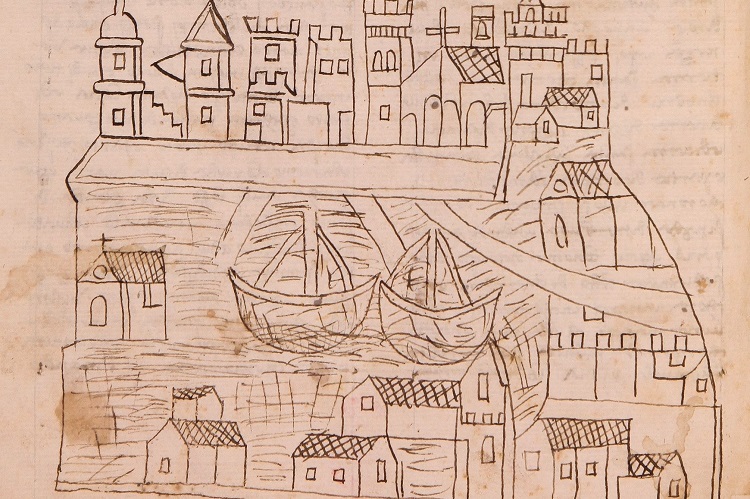Art World
This Newly Discovered 14th-Century Drawing of Venice Is the Oldest-Known Depiction of the Floating City
The drawing was made by an Italian pilgrim on his way to Jerusalem.

The drawing was made by an Italian pilgrim on his way to Jerusalem.

Artnet News

An art historian at the University of St. Andrews in Scotland has uncovered the oldest-known drawing of the city of Venice, dating back to the 14th century.
Sandra Toffolo, an expert in Renaissance history, came across the document in May of last year while researching her upcoming book, “Describing the City, Describing the State: Representations of Venice and the Venetian Terraferma in the Renaissance,” at the Biblioteca Nazionale Centrale in Florence.
Examining the manuscript of Niccolò da Poggibonsi, an Italian pilgrim who made trips to Jerusalem between 1346 and 1350, during which he stopped in Venice along the way, she found a faint pen drawing depicting Venice’s famous canals amid gable-roofed buildings and steepled churches.
“The discovery of this city view has great consequences for our knowledge of depictions of Venice,” Toffolo said in a statement, adding that it “shows that the city of Venice already from a very early period held a great fascination for contemporaries.”
A researcher from the University of St Andrews has unearthed the oldest known city view of Venice from the 14th century
Dr Sandra Toffolo @StAndrewsHist discovered the image during her research at the Biblioteca Nazionale Centrale, Florencehttps://t.co/K3GpXr1Lac#evertoexcel pic.twitter.com/OfrtAwAUYi
— University of St Andrews (@univofstandrews) January 6, 2020
Found alongside markings on the sheet of paper were a series of small pinholes, a clue that the image was duplicated and shared. During this era, illustrations were copied by pouring powder through such holes onto another substrate, thereby reproducing the outline of the original.
“There are several images in manuscripts and early printed books that are clearly based on the image in the manuscript in Florence,” Toffolo said.
Though the drawing is the oldest to depict Venice, there are maps of the city that predate it. The oldest one, made by a Franciscan friar, dates back to 1330.